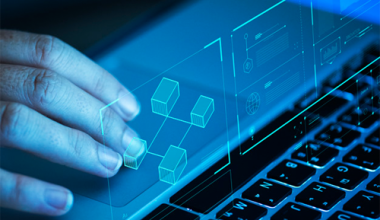
Augmented Reality (AR); Virtual Reality (VR): Two rapidly developing digital technologies that have long held the theoretical promise to provide consumers with a more comfortable, enhanced, and in-depth shopping experience and however, like many other aspects of business in the digital age, the speculative theory quickly turns into real reality.
Augmented Reality Development (AR) and Virtual Reality Development (VR) are ready to be present, and, both individually and collectively, are ready to completely reverse our traditional understanding of the retail shopping experience.
Application developers ask many questions from their clients in the retail sector. One of the most common questions focuses on the emergence of augmented reality and virtual reality.
Retailers who have learned how to utilize this technology to their own advantage experience more success than ever before. So how can Indian mobile app development companies and developers help their retail clients advance?
It all started with a closer look at supply chain development. When it comes to efficiency and speed, augmented reality and virtual reality are the two most important tools of all. Now that whole the retail industry has approached the necessary resources, there is no reason to rely on an outdated method or technology.
Any business that wants to learn more about the true value of this technology should consider the consumer evaluation process. Those who put themselves in the shoes of their target audience before meeting with application developers will experience greater levels of success.
For starters, businesses now have the ability to use this technology to create a deeper shopping process. ECommerce stores that used to rely on customers who are used to the size of their clothes can now offer virtual changing rooms.
This keeps businesses like this from experiencing a higher return volume in the long run and if you want to know How Much it Costs to Develop an eCommerce Mobile App and accomplish this you need to hire an e-commerce mobile app development company or hire a freelancing software developers team.
Examining With VR and AR
The ways that VR and AR aim to change perceptions of reality to create different immersive experiences and enhance retail experiences in different ways.
The use of a VR headset aims to eliminate other stimuli, with a shield and the use of headphones to control the auditory output creating a real digital world. Augmented Reality (AR) Shopping Apps like IKEA launch their own virtual shop, which allows customers to visualize a new kitchen in their home.
M&S was an early adopter of VR, deploying technology to create virtual reality pop-up showrooms as part of the launch of the home lineup.
Where VR aims to bring you to another reality, AR enhances the real-life environment. Tesco uses AR technology to enable customers to visualize key products in the comfort of their homes with additional versions of the Home Book catalog.
Apple’s upcoming AR Kit platform, which is planned to be launched later this year with a new iPhone, means that opportunities for retailers will only become wider.
These types also add an impression of legitimacy to any company. Now consumers expect to have access to augmented reality and virtual reality, and Apple and Google have already taken key steps. Google ARCore and Apple ARKit are redefining retail in a way that was previously impossible for the company.
Shopping at home is no longer considered an added benefit; it is an expected aspect of the experience. Amazon is famous for giving its customers special shopping days that encourage more and more shopping at home.
Modern consumers are accustomed to shopping on their own. They do not want to spend the holidays walking in the local malls, forever looking for the best.
Even decoration and furniture retailers experience differences. Let us say consumers are finding out how the object they are considering will look in their living room. With augmented reality and virtual reality, it has never been easier to imagine the layout of a new room. Gone are the days of crossing our fingers and hoping that the new sofa will really fit once it arrives.
All allegations are taken from the retail experience, for the benefit of retailers and consumers. Pain points are removed from the equation completely. Barriers to visualization are a common cause of many of these pain points. A consumer does not want to guess. They are looking for a degree of certainty that ancient brick-and-mortar retailers do not always want to offer.
Also Read:
Guide on Augmented Reality (AR) App Development Cost – 2022
Is It Worth The Investment?
While these examples show interesting ways that retailers are already using VR and AR to enhance the shopping experience, they don’t tell retail marketers what they want to know – is it worth investing?
Deploying VR and AR technology seamlessly into the shopping experience, crossing hundreds of potential retail stores, and training staff need significant input. Proper planning is essential for the long-term success of AR/VR in retail.
AR and VR also allow industries to intersect in ways that consumers prefer. Retailers are now given more information than ever before, thanks to this technology. Their efforts are now focused on handling this information as quickly as possible.
Instead of launching expensive advertising campaigns and waiting to measure results months later, businesses have the opportunity to learn more in real time.
Engagement with each product is tracked, so retailers can adjust their methods accordingly. A personalized shopping experience is the way of the world now, because every experienced application developer will be more than happy to mention. Any retailer who does not focus on reaping the benefits of this shift puts himself or herself in a position that is more challenging than necessary.
The Future of AR and VR in Retail
As stated in Forbes, both the AR and VR in retail seem to be broken up into two main usage categories. On the one hand, AR is suitable for consumer applications that answer questions like, “What does it look like in my home?
What does it look like to me? Tell me more about how to use this product.” VR, on the other hand, finds homes in business uses such as store design, various shelves and layout, as well as in-store contextual running and real-time store performance, which allows executives to view store data in the context of how the store looks, not just as a chart or list of numbers.
Consumers are very happy about the future that supports shopping technology. Research found 38 percent of U.S. consumers expect to see an increase in store experience, while 35 percent want improved customer service based on individual needs, and another 35 percent look for better ways to find and compare different products.
With their ability to replace what shoppers dislike about shopping with a more in-depth, interactive and information-driven experience, AR and VR in retail promise to create a different brand experience that drives conversions, repeat visits and higher revenue.
After goods and services are on their way, AR and VR also play a major role in ensuring that the goods arrive on time. Retailers who do not depend on AR and VR app developers to help them implement augmented reality and virtual reality during this process lose many benefits. A consumer will not continue to protect companies that do not take the right steps.
Now consumers expect certain things that were once considered luxuries. Let us say the customer cannot receive two-day delivery for the items needed quickly. What are the opportunities for consumers to return to the same retailer who could not meet this need before? There is no slim, of course. Meanwhile, retailers need AR and VR to track consumer behavior.
This allows them to meet their needs more directly in the future. Workers can also do their tasks faster when they give special instructions. It has never been easier for retailers to increase production speed and increase efficiency. Workers are not considered as a robots. They need valuable insights to work on and information they can act on.
Conclusion
VR can benefit a business’s bottom line too. Top shop’s use of VR technology enabled customers to select a garment off the rack and watch it on themselves without trying it physically; creating an immersive online VR shopping experience where consumers could try a item they might eventually be enticed to buy anytime.
Hire our Mobile App Developers from Fusion Informatics and we are the Top Augmented Reality (AR) & Virtual Reality (VR) Mobile App Development Companies in Bangalore, Ahmedabad, Mumbai, Noida, Delhi and Gurugram, India, USA and Dubai that can take the aforementioned steps and plan for the future will have the greatest level of success going forward.
The top retailers are the retailers who remain on the cutting edge and pride themselves on staying one-step ahead of the game. Meanwhile, those who allow the latest technologies to pass them by will end up playing catch up with their more forward thinking competitors. AR and VR create a more competitive advantage that cannot be neglected now.
When deciding whether Virtual Reality or AR is worth the investment, it is important to remember that these retailers have considered the role of their online store in the purchase process and, in particular, the type of items they intend to enhance with Augmented Reality or VR activity.
This observation will allow retailers to build a measured action for implementing VR and AR tech in a way that creates an exciting retail experience, not only increasing footfall but also crucially resulting in driving maximum sales.



